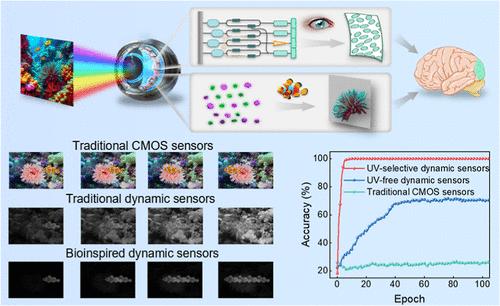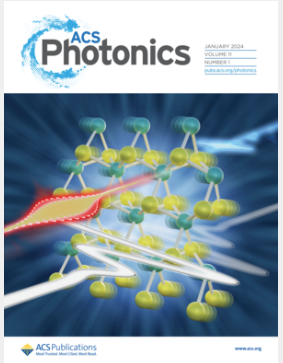Bioinspired Motion Perception Using the Wavelength-Sensitive Nonvolatile MoTe2 Homojunction
IF 6.5
1区 物理与天体物理
Q1 MATERIALS SCIENCE, MULTIDISCIPLINARY
引用次数: 0
Abstract
Neuromorphic sensors with the capability to simultaneously sense and process dynamic images show great potential for data-centric in-sensor motion perception. However, the presence of persistent background noise and redundant computational burdens limits perception accuracy and efficiency. Here, we present wavelength-sensitive bioinspired neuromorphic devices that integrate the high-level preprocessing of the human retina and ultraviolet feature extraction of the fisheye, enabling efficient image compression and background filtering capabilities to enhance motion perception. By storing dynamic image information as photoresponsivity in our nonvolatile MoTe2 homojunction, mass data can be compressed through multiplying trainable light intensity and photoresponsivity. This induces an n-fold reduction in backend computational requirements for n × n image motion perception while preserving a recognition accuracy of 100%. Furthermore, we successfully identify and track the motion of anemonefish obscured in the indistinguishable background, achieving enhanced recognition accuracy from 70% to 100%. This work showcases the substantial potential for developing intelligent vision systems with feature information extraction and high-level computational capabilities.

使用波长敏感型非易失性 MoTe2 同质结的生物运动感知技术
本文章由计算机程序翻译,如有差异,请以英文原文为准。
求助全文
约1分钟内获得全文
求助全文
来源期刊

ACS Photonics
NANOSCIENCE & NANOTECHNOLOGY-MATERIALS SCIENCE, MULTIDISCIPLINARY
CiteScore
11.90
自引率
5.70%
发文量
438
审稿时长
2.3 months
期刊介绍:
Published as soon as accepted and summarized in monthly issues, ACS Photonics will publish Research Articles, Letters, Perspectives, and Reviews, to encompass the full scope of published research in this field.
 求助内容:
求助内容: 应助结果提醒方式:
应助结果提醒方式:


